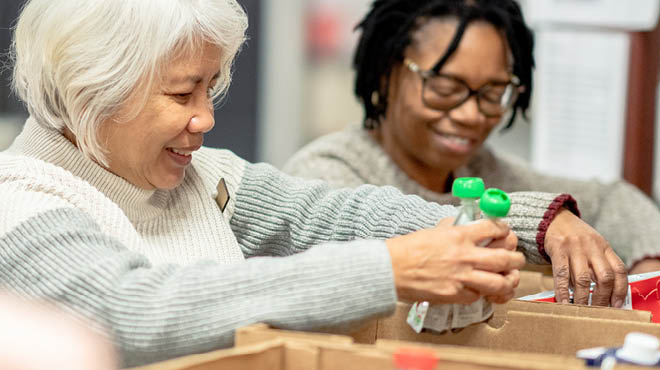Use mindfulness to cope with chronic pain

Mindfulness has become a popular concept. It can provide many benefits, including helping you manage stress and improve focus. But what is mindfulness?
According to Jon Kabat-Zinn, a leader in mindfulness practice, "Mindfulness is awareness that arises through paying attention, on purpose, in the present moment, nonjudgmentally."
Mindfulness principles and practices have been proven to help people manage symptoms of stress, anxiety, depression and other mental health conditions. Extensive research also has been conducted on the effectiveness of mindfulness as a tool for chronic pain management.
An estimated 50 million U.S. adults experience chronic pain that lasts longer than three months, according to the Centers for Disease Control and Prevention (CDC). Chronic pain can occur after an injury or without apparent damage or previous bodily injury.
Common types of chronic pain include lower back, migraine and headache, neck and facial. Living with chronic pain can have a significant effect on your relationships and quality of life, as well as your physical and mental health. It can also affect your mobility, independence and ability to work.
It's common for people with chronic pain also to have symptoms of depression, anxiety and increased stress. People living with chronic pain often struggle with effectively managing pain while actively participating in life.
Managing chronic pain with mindfulness
Increasing evidence points to regular mindfulness practice as a method to reduce a person's pain experience. In 2015, Fadel Zeidan, Ph.D., and his colleagues conducted a study to investigate the effectiveness of mindfulness practice in pain management. They found that brain images of participants who received mindfulness as treatment had less activation in the parts of their brains that manage pain messages. Their research also has shown that some participants have been able to reduce, and sometimes eliminate, the use of pain medications through ongoing daily mindfulness practice.
Mindfulness exercises help people to focus their mind and body in the moment without judgment. Daily mindfulness practice can help people living with chronic pain manage negative or worrisome thoughts about the pain. These thoughts are normal and can affect mood and increase pain. Being able to focus on relaxing the body, noticing the breath and body sensations as being there just as they are, can help manage pain, as well as reduce depression and anxiety symptoms.
Getting started with mindfulness
While it can be helpful to work with a mindfulness professional or psychotherapist to learn the concept of mindfulness, you can find many resources to get started on your own. Books, CDs, and smartphone and tablet apps are available for free or purchase that teach and help you put into practice mindfulness meditation to manage pain and other conditions. Many mindfulness practitioners have programs specifically for pain management, as well as generalized resources available for purchase through online retailers or local bookstores.
You can find many mindfulness exercises online, including on YouTube. Mayo Clinic Connect offers online resources and information on mindfulness and other health topics. Mayo Clinic Connect provides access to the Mindful Breathing Lab resources, which offer free audio mindfulness exercises.
If you'd prefer to experience mindfulness in a group setting, local community agencies often offer mindfulness retreats, workshops and therapy groups throughout the year. These can be a great way to experience guided mindfulness meditation led by an experienced facilitator.
Giving mindfulness a try
Accessing information on mindfulness is easier than ever thanks to its growing popularity and modern technology. If you're living with pain, mindfulness could be a helpful tool for you.
Lori Sodeman is a social worker in Family Medicine in St. James, Minnesota.




